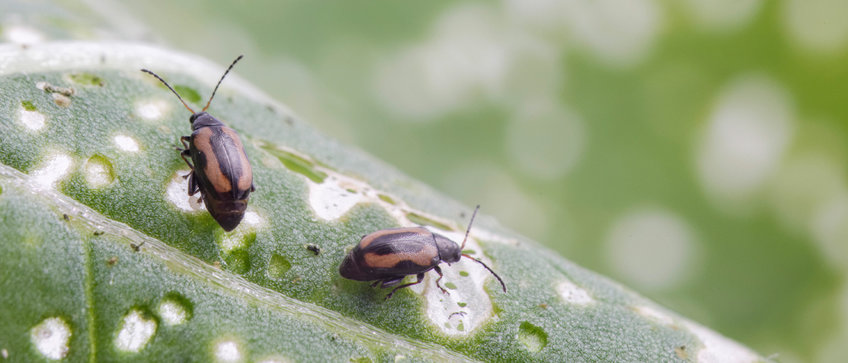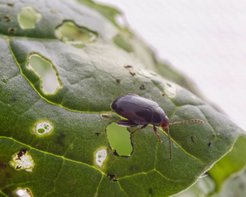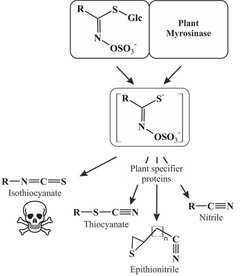
Sequestration and Detoxification in Insects
Plants form an astonishing variety of so-called specialized metabolites to defend themselves against predators. However, insects have been able to adapt to the plant defense substances, for example by developing an insensitivity to the defense substance or by detoxifying it enzymatically. Numerous insect species even store secondary plant compounds in their own tissues and use them for their own defense against natural enemies. The central hypothesis of our research is that insect adaptive mechanisms to plant defense chemistry represent key evolutionary innovations that have driven the emergence of the biodiversity of herbivorous insects. To test this hypothesis, we aim to identify the adaptive mechanisms that enabled these insects to overcome plant defenses. We also aim to elucidate the genetic basis and evolutionary origin of these adaptations. The focus is on elucidating the adaptive mechanisms of flea beetles of the genera Phyllotreta and Psylliodes to the glucosinolate myrosinase system used by cruciferous plants to defend themselves. In wounded tissues, mustard oil glycosides (glucosinolates) are enzymatically converted into highly reactive isothiocyanates, which have a very negative effect on non-adapted herbivores. We have already shown that beetles of the genus Phyllotreta not only accumulate large amounts of these mustard oil glycosides in their bodies, but also developed their own myrosinase, which enables them to activate stored mustard oil glycosides for their own purposes. In beetles of the genus Psylliodes, which are also specialized on cruciferous plants, glucosinolate metabolism appears to be much more complex. We are currently investigating the mechanisms underlying sequestration and metabolism of mustard oil glycosides in Phyllotreta and Psylliodes, and reconstructing the phylogeny of Psylliodes species to trace the evolution of host-plant associations in this genus.



